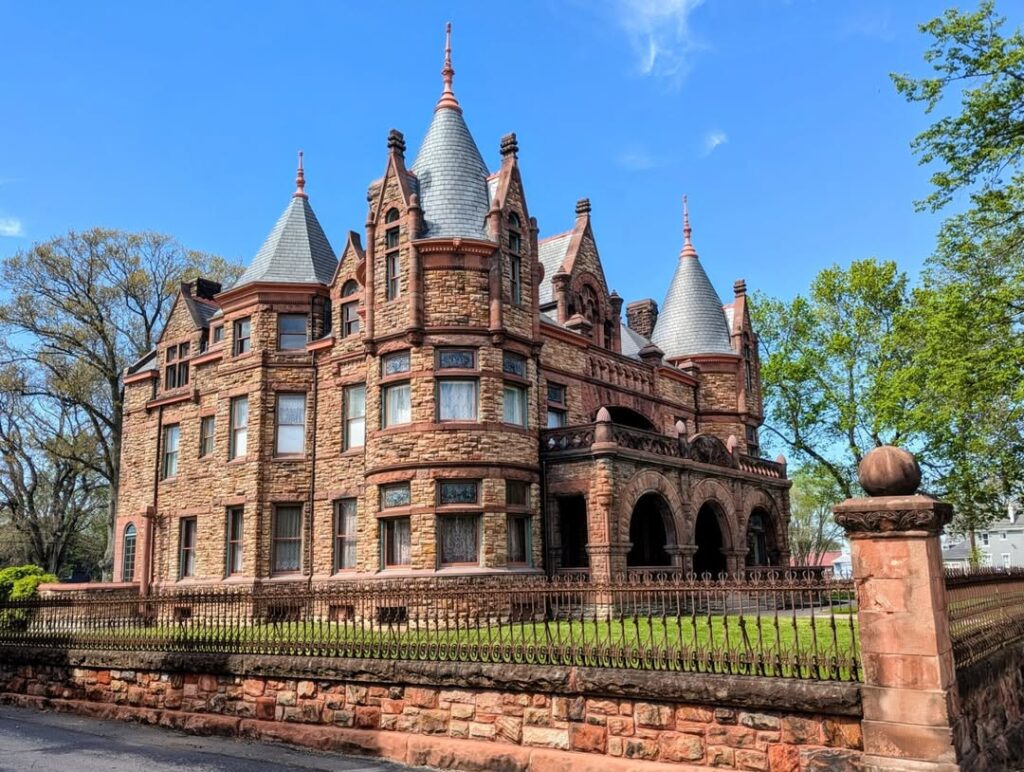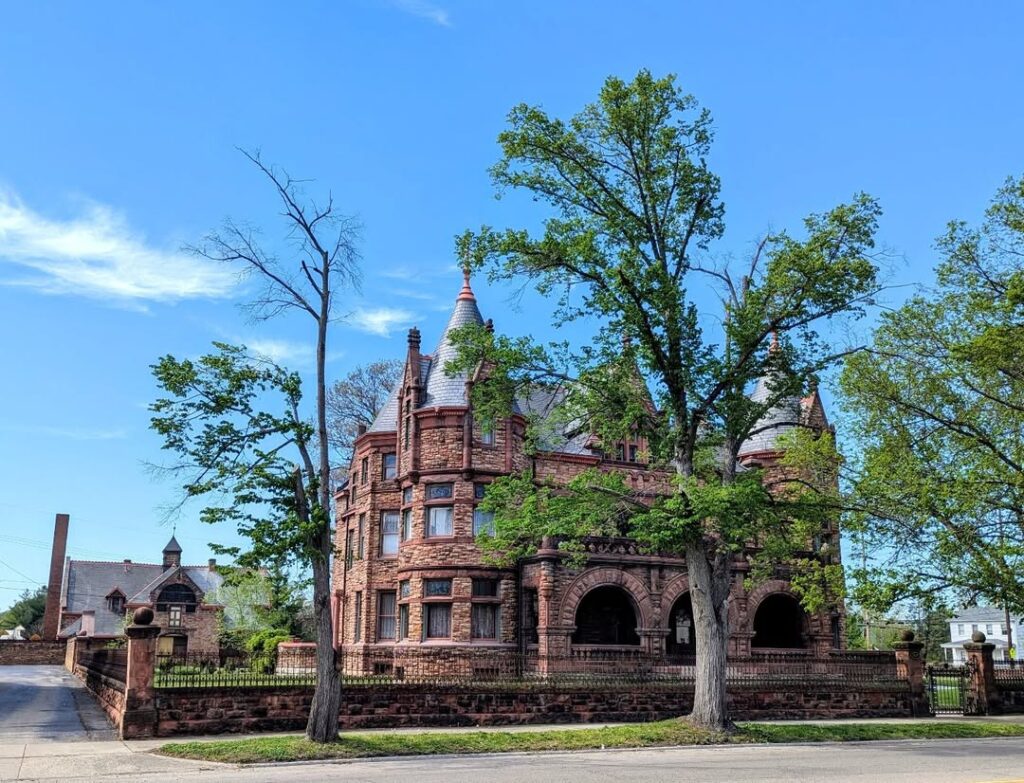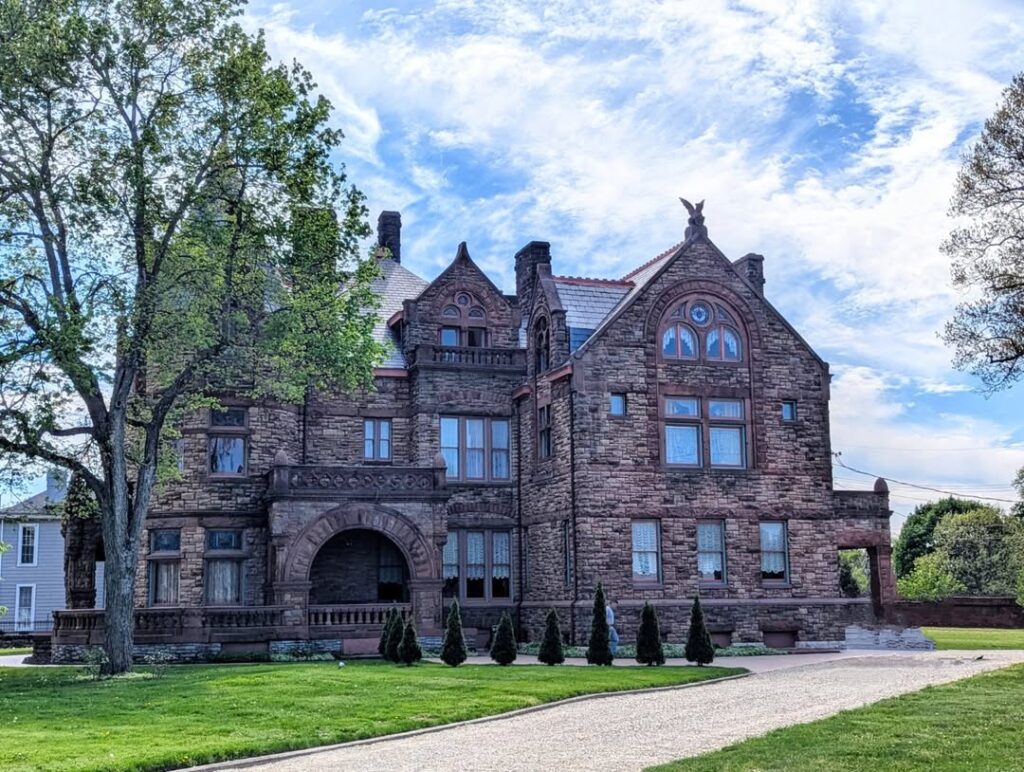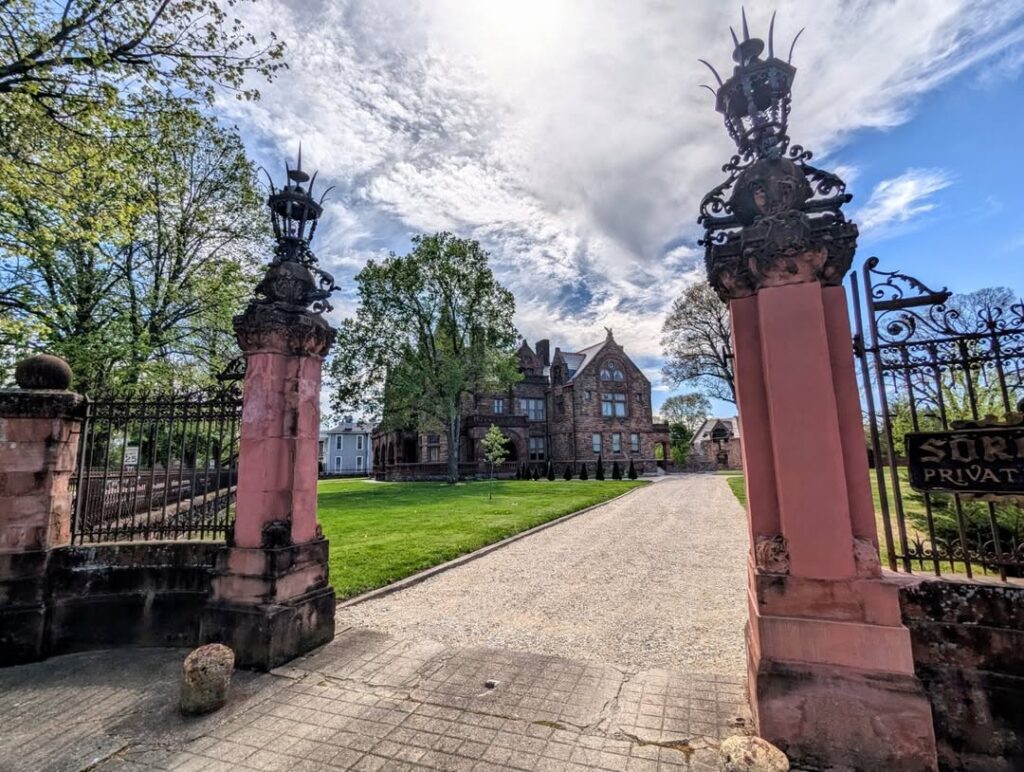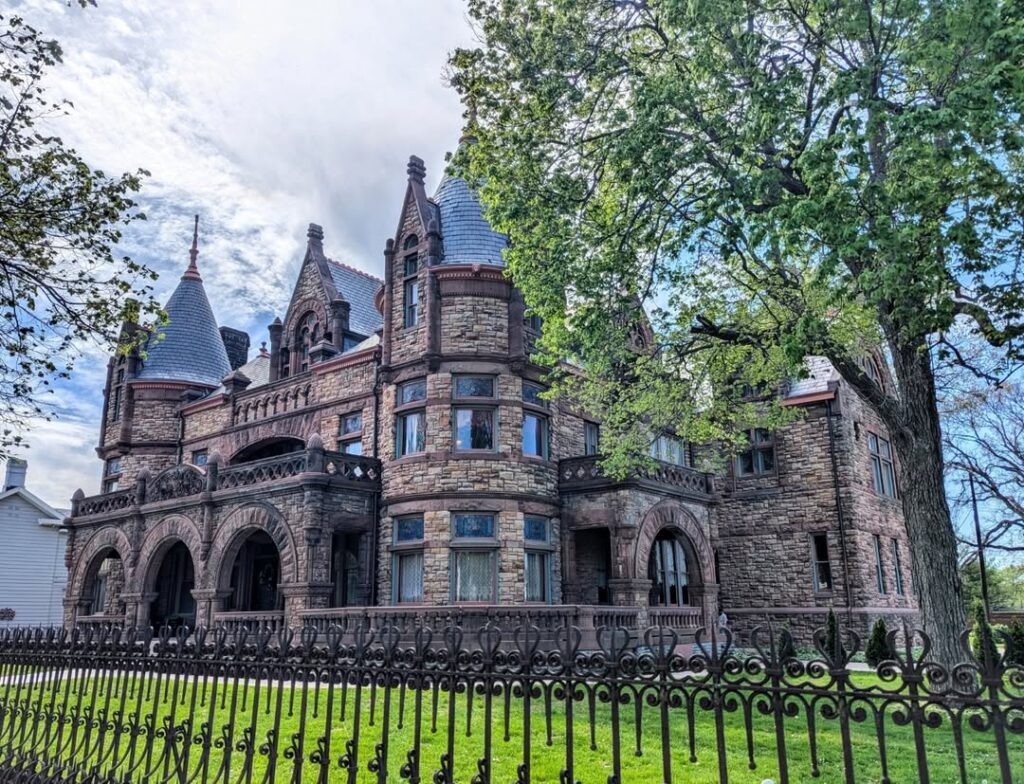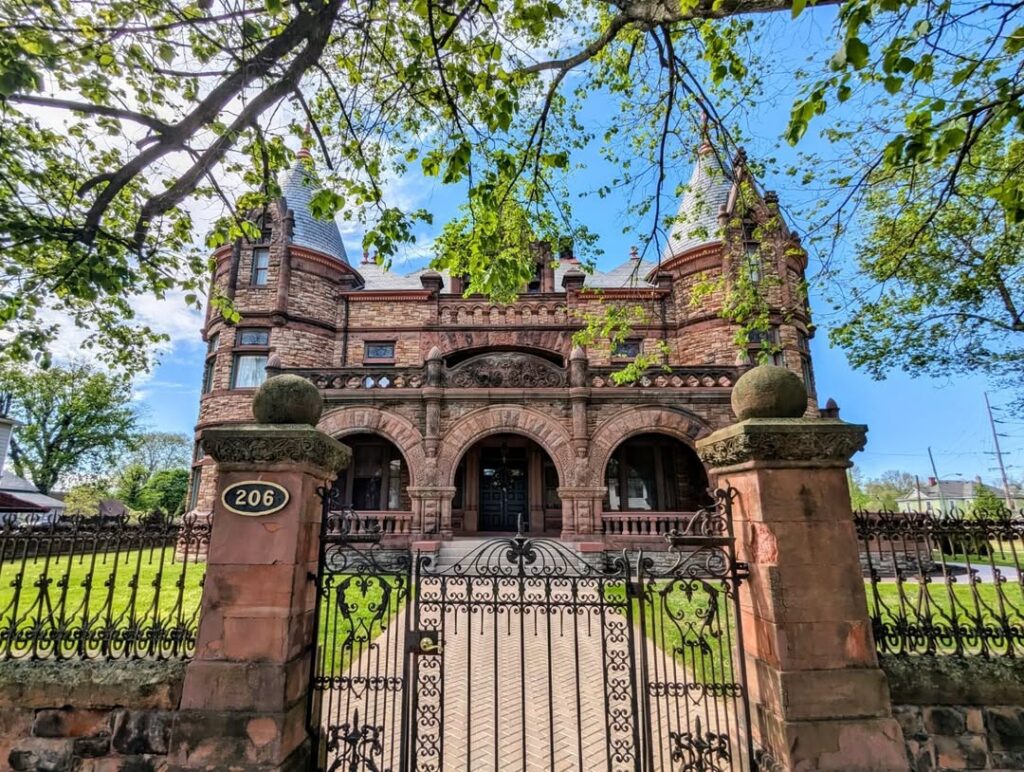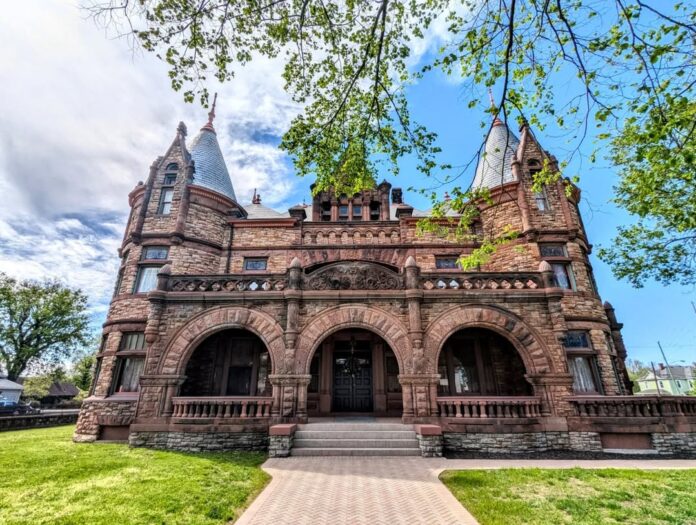In the heart of Middletown, Ohio, at 206 South Main Street, stands the magnificent Sorg Mansion, a testament to the city’s Gilded Age prosperity.
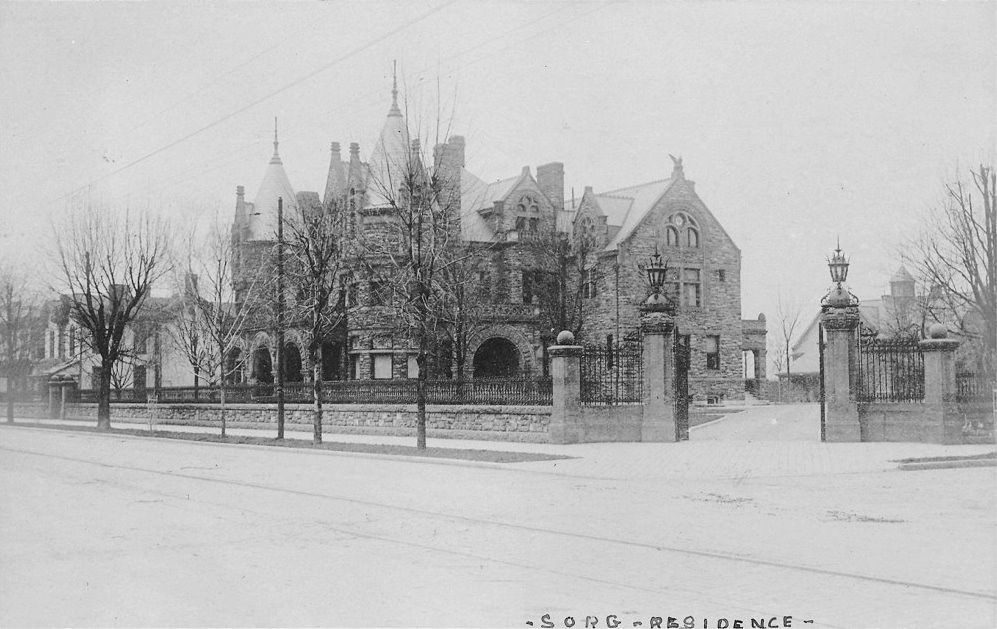
This “Romanesque castle” was the creation of Paul John Sorg, an entrepreneur who became Middletown’s first millionaire.
Born in 1840 to German immigrants, Paul Sorg’s journey was a classic American success story.
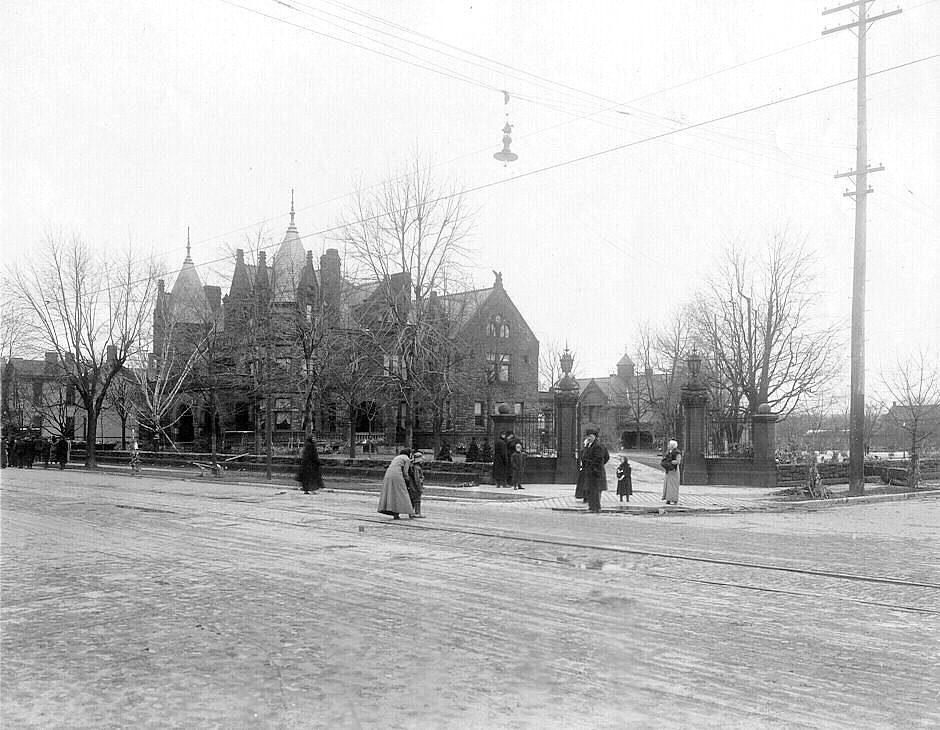
This photo was taken after the 1913 flood. The man standing at the corner facing the camera is Paul Arthur Sorg. He died about 6 weeks after this photo was taken.
The wrought iron and stone base attached to the wrought iron collapsed during the flood. It fell to the sidewalks on both streets. This might explain why so much of the wrought iron is damaged to this day.
Although Jennie Sorg maintained this home until her death in 1930, she did not live in it full time. She mainly lived in New York City and would visit Middletown once or twice a year, sometimes staying a few months.
After moving to Cincinnati, serving in the Civil War, and working as an iron molder, he found his calling in the tobacco industry.
In 1864, he formed a pivotal partnership with John Auer, a skilled tobacco roller. While Auer crafted the product, Sorg managed the finances, and together they built an empire.
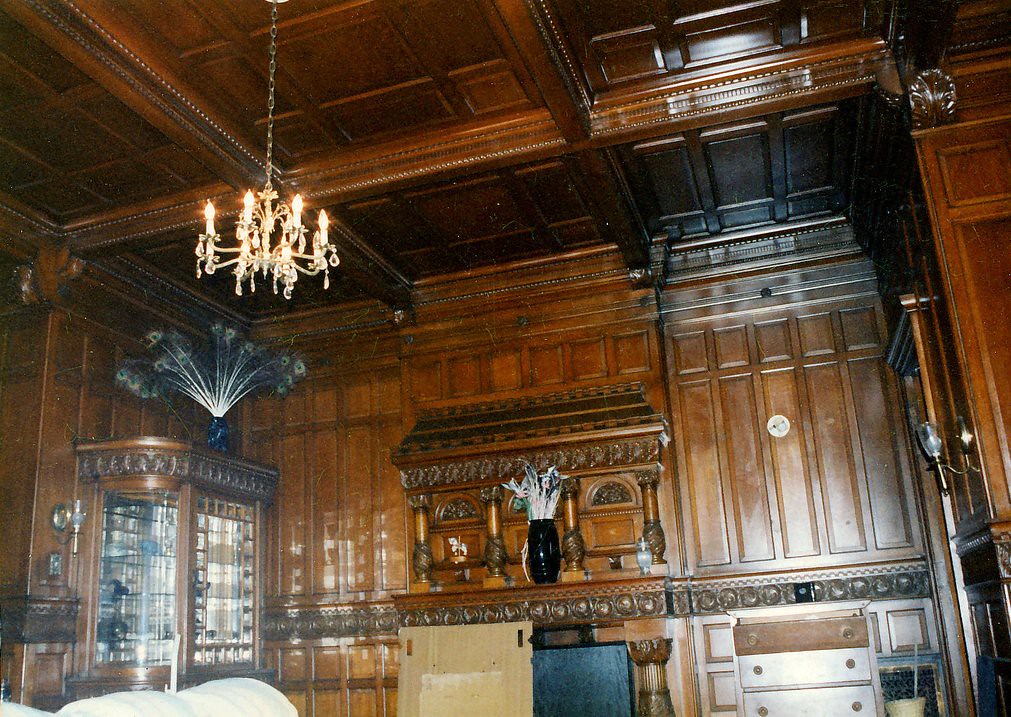
Regular 35mm photo taken in 1997.
Their company eventually relocated to Middletown, and the P. J. Sorg Tobacco Co. grew into one of the largest in the world.
In 1887, Sorg invested a lot of money to build his 35-room dream home.
The mansion featured a fireplace in every bedroom and a grand staircase in its main hall.
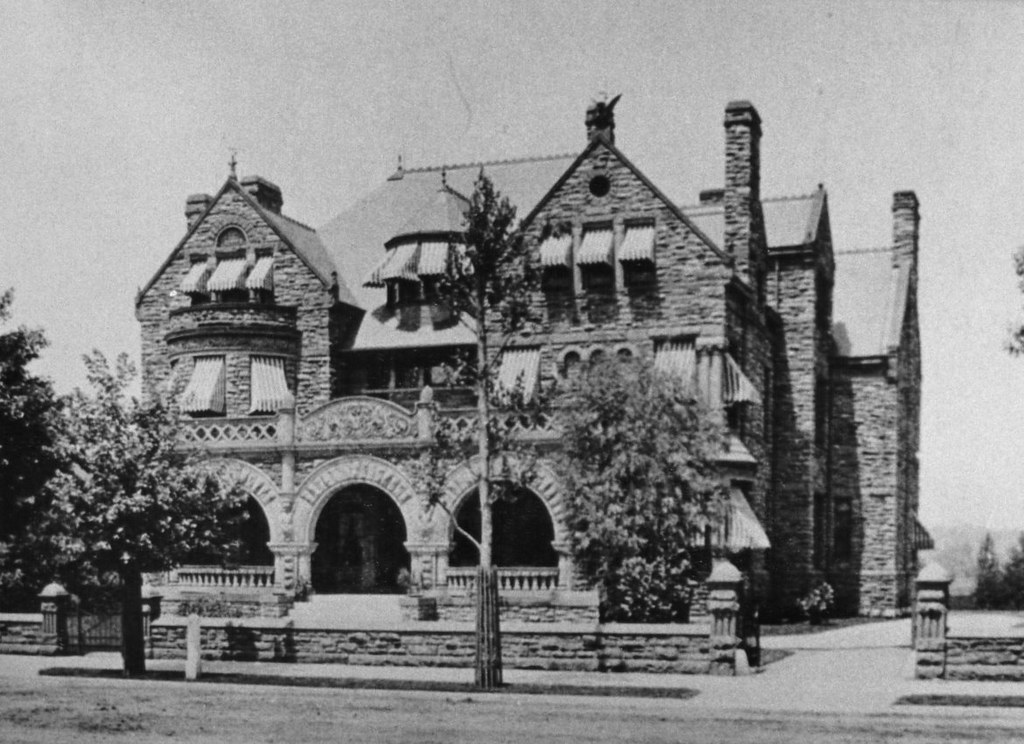
Sorg Mansion in 1894
This is the Sorg Mansion that Paul J. Sorg knew. Most people do not realize the version that exists today was not completed until after Paul J. Sorg died.
He spent his final few months living in a house that used to sit on the corner of S. Main & Second Ave., right where the entry gates are to the property.
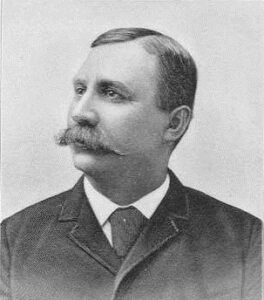
That house is still around. It was moved to the back corner of the property and used to house the families of the property caretaker and the gardener.
Many people refer to it as the maid’s house, but the maids that resided on the property lived on the 3rd floor of the mansion.
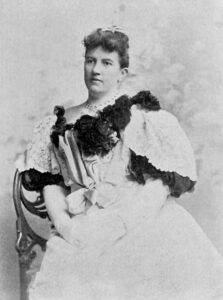
A 1902 expansion added a ballroom, elegant turrets, and a stately carriage house, all enclosed by a formidable stone and iron fence.
However, the mansion’s splendor faded in the 20th century. It was divided into apartments in the 1930s and gradually deteriorated.
Placed on the market for $500,000 in 2012, the historic home found new owners dedicated to its revival.
Since 2014, a painstaking restoration has been underway to transform it into a bed and breakfast, with the slate roof and interior details being carefully brought back to their former glory.
The public’s enduring fascination was proven in 2018 when over a thousand guests toured the home during a rare opening.
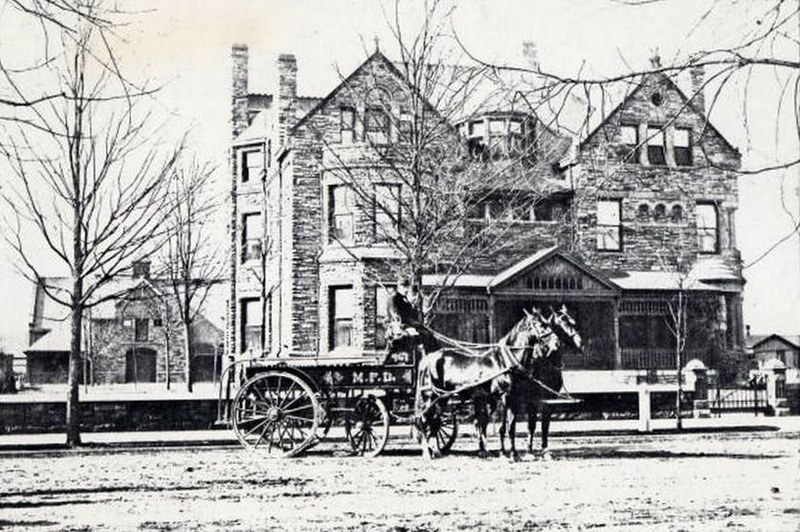
Sorg Mansion in 1888
This is a photo of the original house when completed. It cost $225,000 to build. The carriage house cost $25,000. The stone fence cost $35,000 (after expanded and wrought iron added). Contrary to Middletown history stories, the home did not cost $1,000,000 to build.
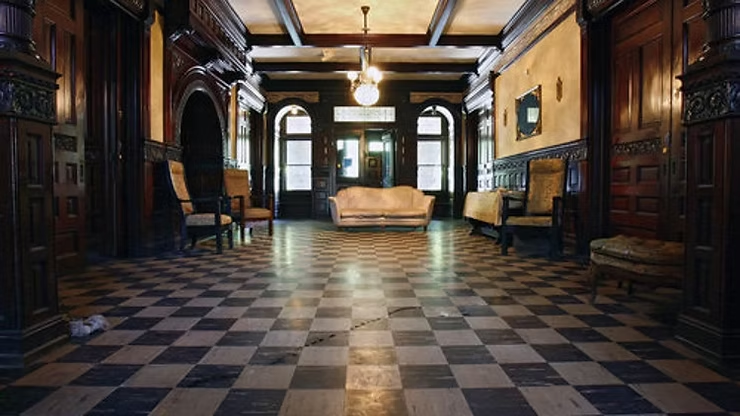
After additions in 1900-1902, the relocating of another home to the rear of the property, and extensive interior remodeling the total cost to build the home was more in the $350,000-$400,000 range. That would be around $8.5m-$9.5m in 2009 dollars.
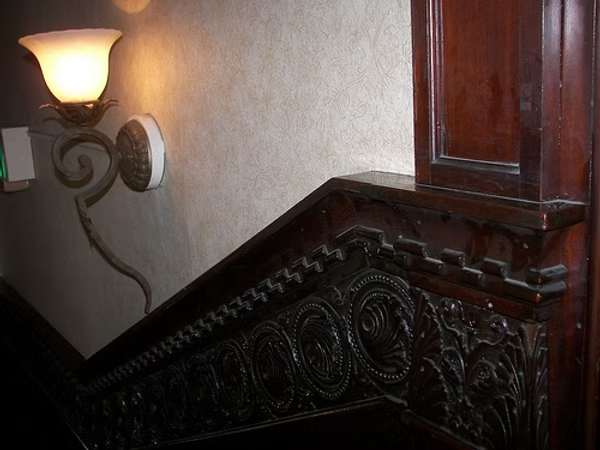
Another set of rumors that have existed for decades revolve around underground tunnels leading to the old First Baptist Church and the Sorg Opera House. There are no tunnels. Rich people did not walk underground in dirty tunnels full of rats, spiders, etc. to avoid common people only to end up having to sit in a church sanctuary or the opera house and be surrounded by the common people they were trying to avoid by traveling in underground tunnels. Any tunnels that might run under the streets would have been sewer tunnels, not passenger tunnels.
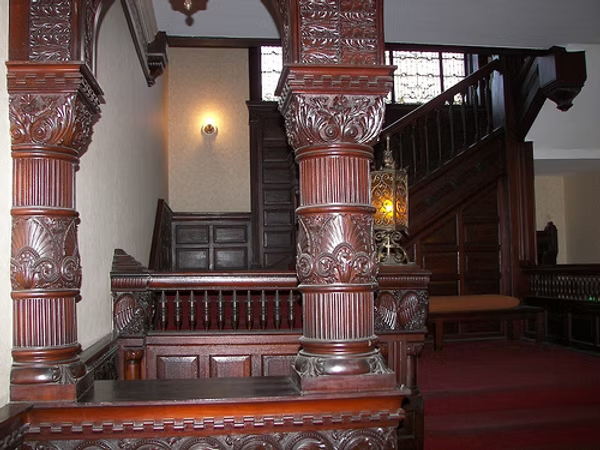
The Sorgs did not live in Middletown full time. Several years during the 1890’s were spent living in Washington, D.C. After Paul J. Sorg became incapacitated around the year 1900, he spent most of the last 2 years of his life traveling around the world to find a cure for his ailment.
He spent quite a few months at a medical type facility in Colorado not long before his death as a last ditch effort to be cured. After his death in 1902, Paul A. Sorg’s wedding in 1904, and Ada’s wedding in 1905, the Sorg family connection to Middletown became less and less.
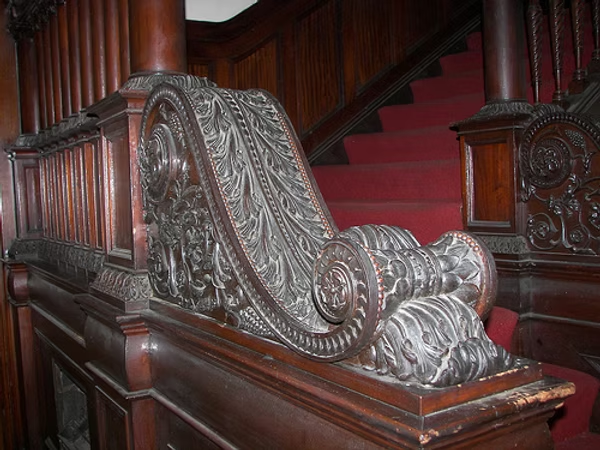
By the end of the first decade of the 1900’s they were all primarily living in NYC. Jennie would visit Middletown a couple times per year, sometimes staying a few months. Most of Jennie’s visits were spent at the home they owned at 8256 Thomas Rd. in Madison Twp. and not at the Sorg Mansion.
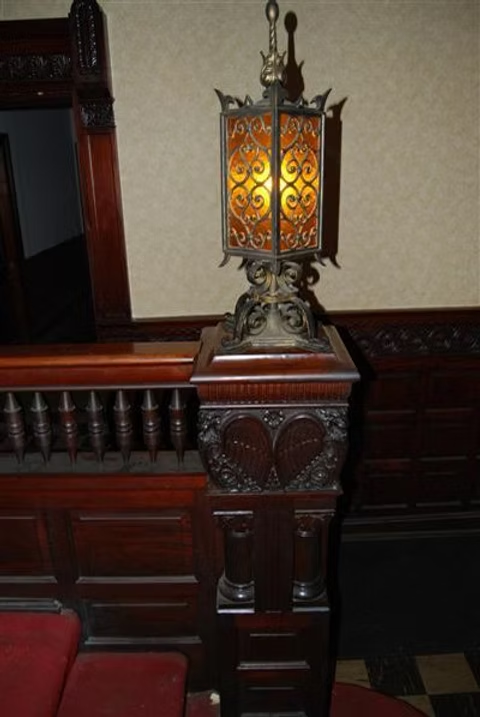
The Sorg Mansion was mostly used for parties, group gatherings, church group meetings, etc. Jennie had many Daughters of the American Revolution functions at the mansion. It was a show place and maintained that way for over 50 years. One lady that attended many functions at the home described the floors as so highly polished it was like walking on glass. The condition of the mansion today is mind boggling.
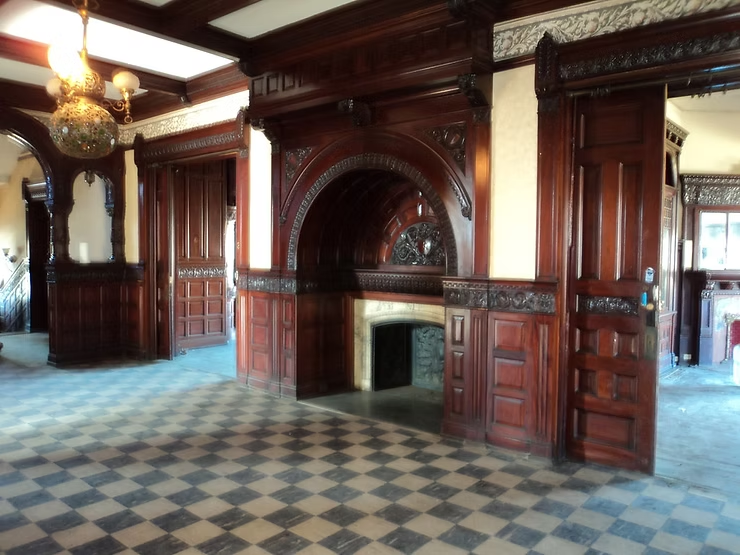
This property was involved in numerous lawsuits regarding estate & property taxes after the death of Jennie Sorg. The heirs of Jennie refused to pay the property taxes and the Sorg Mansion was eventually sold at a tax auction. It was sold to the Finkelman family (Ann Rosenthal) in 1938 for $35,000 (or around $525,000 in 2009 dollars).
